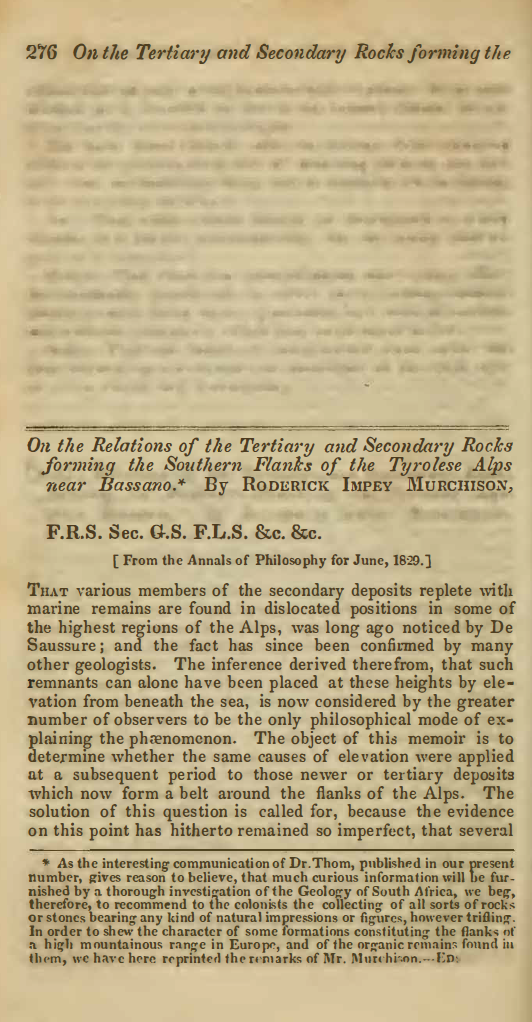On the relations of the tertiary and secondary rocks forming the southern flanks of the Tyrolese Alps near Bassano
DOI:
https://doi.org/10.21504/saqj.13.2651Keywords:
Geology, Stratigraphy, Tertiary rocks, Secondary rocks, Tyrolese Alps, Bassano, Scaglia, Dolomitic Limestone (Oolitic Series), Geological conglomerates, Calcareous sandstone, Blue Marl, Calciferous grit, Paleontology, Fossils, Nummulites, Lenticulites, Pectens, Echini, Lucina concentrica, Natica glaucinoides, Chama squamosa, Voluta harpula, Caryophyllia, Fungites, Calcairé grossier, Brenta River, Piave River, Asolo, Possagno, Campese, Val d'Urgana, Plains of VeniceAbstract
Originally published in the Annals of Philosophy for June, 1829
This memoir by Roderick Impey Murchison examines the structural relationship between the Tertiary and Secondary rocks along the southern flanks of the Tyrolean Alps near Bassano, Italy, aiming to demonstrate that the newer Tertiary deposits were elevated simultaneously with the older Secondary strata. This challenges the prevailing opinion that mountain-building forces ceased before the deposition of Tertiary sediments.
Murchison details two descending sections (Asolo to Possagno, and Bassano to Campese) and identifies two main Tertiary divisions: an exterior zone of conglomerates, sands, and marls (equivalent to Subapennine formations, containing many modern shells); and an inferior system of green sandstone and marls distinguished by Nummulites (equivalent to the Calcairé grossier or London Clay).
Crucially, in the Brenta River section, the vertical beds of the lowest Nummulite limestone are shown to be in perfect contact and conformity (vertical dip) with the underlying Secondary Scaglia (chalk equivalent). This observation—the absence of unconformable deposition or the freshwater "Plastic Clay" interval found elsewhere—demonstrates a conformable passage from the Secondary to the Tertiary epoch in this region. Murchison concludes that the perfect conformability of all strata, from the dolomitic limestone to the most recent conglomerates, proves that these deposits partook simultaneously of the great convulsive forces that elevated the Alps, negating the notion of a prolonged interval of repose between the two major epochs in this area.
Downloads

